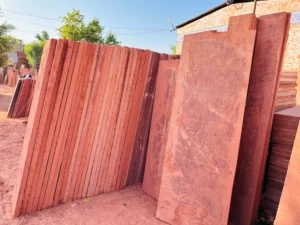Understanding the Quality of Red Sandstone
Red sandstone, a natural stone characterized by its striking red coloration, stands out for its unique qualities. This sedimentary rock is formed from the consolidation of sand-sized mineral particles and rock fragments. The red hue typically comes from the presence of iron oxide. Understanding the quality of red sandstone involves examining its physical and aesthetic properties, as well as its suitability for various applications.
1. Durability and Strength: Red sandstone is valued for its durability. It is capable of withstanding various weather conditions, making it suitable for outdoor use. The stone’s natural strength also lends itself to heavy-duty applications, such as in the construction of buildings and other structures.
2. Resistance to Weathering: One of the key qualities of red sandstone is its resistance to weathering. It can endure rain, wind, and temperature fluctuations without significant degradation. This quality makes it a popular choice for exterior cladding, paving, and garden features.
3. Aesthetic Appeal: The warm, rich color of red sandstone adds aesthetic value to architectural projects. It can create a striking visual contrast when used alongside other building materials. The stone’s natural texture and color variations ensure that each application is unique.
4. Versatility in Design: Red sandstone is versatile in terms of design and can be cut and shaped to meet specific architectural requirements. It is used in a range of styles, from rustic to contemporary, and can be finished in various ways to achieve different textures.
5. Thermal Properties: Another advantage of red sandstone is its thermal properties. It has good heat retention, making it suitable for use in areas that require stable temperature conditions. This property is particularly beneficial in flooring and wall cladding.
6. Maintenance and Longevity: Red sandstone requires minimal maintenance. Its natural resistance to staining and abrasion contributes to its longevity. Regular cleaning and occasional sealing can help maintain its appearance over time.
7. Environmental Impact: Being a natural stone, red sandstone is an environmentally friendly building material. It can be recycled and repurposed, reducing the environmental impact associated with its use.
8. Applications: Common applications of red sandstone include building facades, landscaping elements, interior flooring and wall cladding, and decorative features. Its use in historical buildings and monuments also showcases its lasting quality and appeal.
In conclusion, the quality of red sandstone lies in its durability, weather resistance, aesthetic appeal, and versatility. These attributes make it a sought-after material in various construction and design projects, capable of meeting both functional and artistic requirements.


